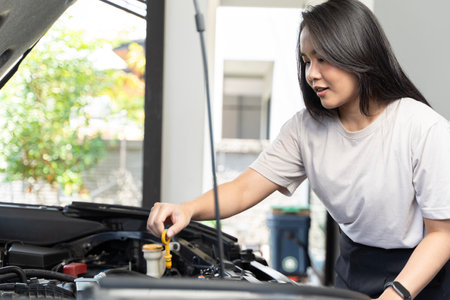1. Choose the Right Storage Location
Selecting the best place to store your car battery is crucial for maintaining its lifespan and performance. A well-chosen storage spot helps prevent damage caused by extreme temperatures and moisture.
Ideal Storage Conditions
To keep your battery in good condition while its not in use, consider the following factors for choosing a storage location:
| Factor | Best Condition |
|---|---|
| Temperature | Cool, but not freezing |
| Humidity | Dry, with no moisture buildup |
| Ventilation | Well-ventilated to avoid gas buildup |
| Exposure | Avoid direct sunlight and heat sources |
Recommended Storage Places
Here are some good locations to store your car battery:
- Garage: Ensure it is dry and properly ventilated.
- Basement: A cool and dry basement can be an excellent choice, but make sure its well-ventilated.
- Shed: Only if it doesnt get too hot or cold.
Places to Avoid
Some locations can cause your battery to deteriorate faster. Avoid storing your car battery in:
- Outdoors: Exposure to rain, snow, or high humidity can lead to corrosion.
- Near heat sources: Keeping it close to heaters or direct sunlight can cause overheating.
- On concrete floors: Extreme cold from the floor can affect the battery’s charge.
Additional Tips
Consider placing your battery on a wooden board or elevated surface to prevent temperature fluctuations from the ground. Also, periodically check the storage area to ensure the conditions remain stable.
2. Disconnect and Remove the Battery
Safely disconnecting and removing your car battery is an essential step in proper storage. Doing this correctly helps prevent accidental discharge, electrical issues, or damage to the battery. Follow these steps to safely remove the battery from your vehicle.
1. Gather the Necessary Tools
Before you begin, make sure you have the following tools and materials:
| Tool | Purpose |
|---|---|
| Wrench (10mm or 13mm) | To loosen battery terminal bolts |
| Gloves | To protect your hands from acid or corrosion |
| Safety glasses | To protect your eyes from sparks or debris |
| Baking soda and water | To clean battery terminals if needed |
2. Turn Off the Vehicle
Before removing the battery, ensure the vehicle is completely turned off, including all lights and accessories. This reduces the risk of electrical shock.
3. Disconnect the Negative Terminal First
Start by identifying the negative (-) terminal, typically marked with a black cable. Use a wrench to loosen the nut and carefully remove the cable. Tucking it away ensures it doesn’t accidentally touch any metal surfaces.
4. Disconnect the Positive Terminal
Next, locate the positive (+) terminal, usually covered with a red cap. Loosen the nut and remove the cable from the terminal.
5. Remove the Battery from the Vehicle
Once both terminals are disconnected, check for any securing brackets or straps. Use the appropriate wrench to loosen and remove them. Carefully lift the battery out of the vehicle, using both hands to support its weight, as car batteries can be quite heavy.
6. Inspect for Any Corrosion
Before storing, check the battery and terminals for any signs of corrosion. A mixture of baking soda and water can be used to clean any residue if necessary.

3. Clean the Battery Terminals
Before storing your car battery, its essential to clean the terminals. Corrosion can build up over time, which may weaken the connection and lead to starting problems when you reinstall the battery.
Why Cleaning the Terminals Matters
Battery terminals can accumulate dirt and corrosion, which interrupts the flow of electricity. Keeping them clean helps ensure a strong connection when the battery is back in use.
Steps to Clean the Battery Terminals
Follow these simple steps to clean your battery terminals effectively:
Materials Needed:
- Baking soda
- Water
- Old toothbrush or wire brush
- Clean cloth
- Petroleum jelly (optional)
Cleaning Process:
- Mix one tablespoon of baking soda with one cup of water.
- Dip the brush into the mixture and scrub the battery terminals to remove corrosion.
- Wipe away the residue with a clean, dry cloth.
- For added protection, apply a thin layer of petroleum jelly to the terminals after cleaning.
Why Baking Soda Works
Baking soda is an excellent cleaning agent because it neutralizes the acidic corrosion that forms on battery terminals. This helps maintain a solid electrical connection.
How Often Should You Clean Battery Terminals?
Even if your battery is in storage, its a good idea to check and clean the terminals every few months to prevent buildup.
4. Charge the Battery Before Storage
Fully charge the battery before storing it and consider using a battery maintainer to prevent it from losing charge over time. A car battery naturally loses charge when left unused, and if the charge drops too low, it could lead to sulfation, which might permanently damage the battery.
Why Charging Before Storage Is Important
A fully charged battery lasts longer in storage compared to a partially charged one. Here’s why:
| Battery Charge Level | Storage Lifespan |
|---|---|
| Fully Charged (12.6V-12.8V) | Several months without significant loss |
| Partially Charged (<12.4V) | More prone to sulfation and reduced lifespan |
Using a Battery Maintainer
A battery maintainer, also known as a trickle charger, helps keep the battery at an optimal charge level. Unlike regular chargers, maintainers supply a low, steady charge without overcharging. This is particularly useful for long-term storage.
How to Use a Battery Maintainer
- Connect the maintainer’s clamps to the battery terminals (positive to positive, negative to negative).
- Plug the maintainer into a power source.
- Check the device settings to ensure it’s in maintenance mode.
- Leave it connected while storing the battery.
Checking the Battery Periodically
Even with a maintainer, it’s a good idea to check your battery every few weeks to ensure it’s holding a charge properly. If you notice the charge dropping, recharge it as needed to prevent damage.
By fully charging the battery before storage and using a battery maintainer, you can extend its lifespan and ensure your vehicle is ready to go when you need it.
5. Five, Regularly Check and Maintain the Battery
Inspecting your stored car battery every few weeks is essential to ensure it remains in good condition. A well-maintained battery lasts longer and will be ready to use when needed.
Check the Charge Level
Car batteries naturally lose charge over time, even when not in use. Use a multimeter to check the voltage:
| Voltage Reading | Battery Condition |
|---|---|
| 12.6V – 12.8V | Fully charged |
| 12.4V – 12.5V | Partially charged |
| 12.0V – 12.3V | Low charge, consider recharging |
| Below 12.0V | Critically low, recharge immediately |
Recharge if Necessary
If the voltage drops below 12.4V, recharge the battery using a proper charger. A trickle charger or battery maintainer is a great option for long-term storage.
Inspect for Corrosion and Damage
Check the battery terminals for corrosion. If you see any buildup, clean it with a mixture of baking soda and water. Also, examine the casing for cracks or leaks, as these indicate its time for a replacement.
Keep It Stored in Optimal Conditions
Ensure the battery stays in a dry, cool environment. Extreme temperatures and moisture can accelerate deterioration.
Final Tip
Setting a reminder to check your battery every 2-4 weeks will help keep it in excellent shape, ensuring its ready when you need it.


